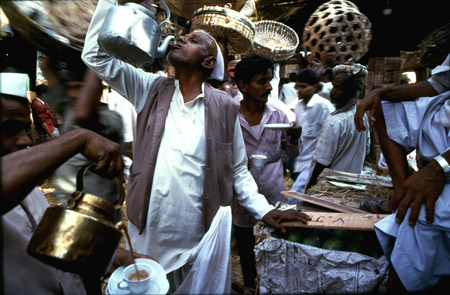Ariel Margolin
Raghubir Singh
In our euro-centric recount of history, we often forget one of the greatest, most significant historical events of the past 500 years: the de-colonization of India and its modern effects. The lives lost were in the millions, the cultural shift was immense and the results are still a live ball today. India feels the repercussions of a dirty split with Pakistan and the sudden, un-helped drop Britain did to them; where no aid was given as they were abandoned after centuries of rule. Raghubir Singh’s photography captures the awkward stage of transition the Indian Subcontinent was experiencing. It captures just how retained some of the vestiges of the colonial days, but even these bygones have a distinct Indian flavor.
The photo which stuck out to me the most was the sunset bathing in the Ganges river. Although, the river is of immense religious significance, and bathing within its waters is a ritual of the Hindu faith, the bathing in this photograph was something much different. The participants were most likely not bathing as a religious ceremony, but were instead doing this out of a lack of running water. I was particularly intrigued by this photo as even today India is plagued by massive levels of poverty. Although the country underwent a meteoric economic rise in recent years, much of the population still lives in abject squalor. I was stricken by this sight as this is not the India you see in travel agency pamphlets, it is the real India brought to our attention by a celebrated artist.
The distant second for me was the photograph of the Ambassador Car. The photograph piqued my interest as in one photograph, we see the multiple figural layers of paint that have been applied to the “Indian Canvas.”. The Ambassador car is the quintessential imprint the English left on India, and its continued production well into the days of independence shows Britain’s lasting impression. The detail we must not forget to notice is of the building behind the car. The building is clearly of Portuguese creation and reflects the multiple ruling powers that governed India over the years. It really is nothing short of amazing how one photo can reflect more than 3 full-length historical encyclopedias.
Although the Baruch photo gallery was superb as well, I enjoyed the Raghubir Singh exhibit just a bit more since the photos were able to capture such an expansive array of information. Another thing I noted was how the photos were often times many years apart and reflect how quickly India went through great change. I would recommend the exhibit to anyone who is interested in learning something about India in an atypical setting, with atypically intriguing information.



